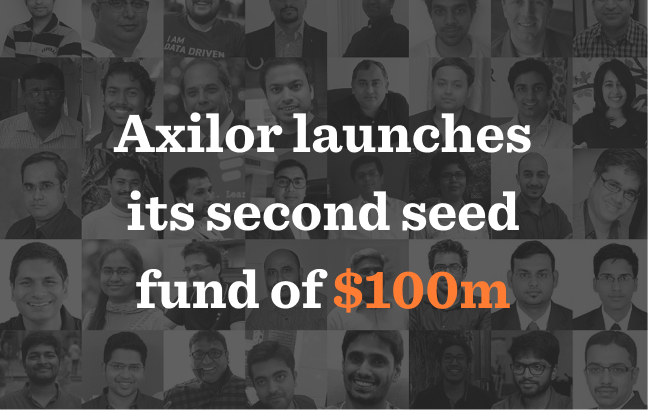I remember meeting Daniel Raj David, CEO, and Co-founder of Detect Technologies, first at the TiE pitching event at Chennai way back in November 2016. He was in his final year at IIT Madras, but no one could have guessed that he was a student from his pitch that day. He clearly articulated the loss (₹12–15 crores per day) that an O&G facility suffered due to a single, undetected pipeline leakage. He followed it up with a promise of how Detect could help petrochemical plants and refineries address this. Even then, it was quite clear that Detect had overcome the most common handicap that deep tech firms face, by explaining the business value of a complex technology, succinctly. I knew back then that Detect’s journey would go far beyond just winning the pitch contest.
First, the back story. It all started in 2013 as a discovery by Prof Krishnan Balasubramanian and his student Tarun Mishra at the CNDE lab in IITM. They were working on a proprietary way to measure corrosion in pipes using ultrasound. They had assembled a talented team of IIT Madras students with diverse backgrounds in signal processing, software engineering, mechanical design, computer vision, and electronics to perfect their technology. Soon, they received their first industry-sponsored pilot for the largest refinery in the world, and that is how the founding team — Tarun Mishra, Daniel Raj David, Harikrishnan, Karthik, and Prof. Balasubramanian started building one of the most innovative deep tech companies from India.
Even at first look, there were several things unique about Detect. It was rare to see an innovation with such global potential coming out of a research lab. It was rarer to see a team of yet-to-graduate students with such complementary skills building a deep-tech product vastly superior than any of the global products/technologies available (Detect’s proprietary GUMPS sensor could work at temperatures 3x higher than any comparable sensor at that point). A couple of conversations convinced us to invite Detect to be part of the Summer 2017 program at Axilor, setting in motion a memorable journey.
Recently, when Detect started raising capital, one of the VC partners asked me a question — What was exciting about Detect, and how had the company changed since we first met them? Typically, it is difficult to objectively assess a company’s performance when you work with them in their early days. But, this question allowed me to organise my thoughts around why I believed Detect was on a trailblazing path for any deep-tech company being built out of India and what other start-up founders could learn from their journey.
Three distinct transitions stand out:
- Moving from Product to Platform
- Moving from hardware to software
- Moving from local to global
1. Product to Platform
As an early-stage investor, sifting through pitches is par for the course. But, what makes it memorable is when you compare the pitch decks of the same startup across different stages of their growth. When I set out to write this piece, I went back to Detect’s seed deck. It started with an innocuous claim of solving the problem of asset integrity for the Oil & Gas industry — identify pipeline corrosion and leaks, andinspect long-range and hard-to-reach assets. They had 2 products at the time — GUMPS for measuring pipeline integrity and NOCTUA (in its early stages) for drone-based inspections. Fast forward 3 years, their funding deck claimed to ‘reimagine global industrial productivity by ensuring continuous uptime with an integrated industrial AI platform’. It was not an empty claim.
Recently one of the global energy conglomerates and a Fortune 10 customer released a case study on how Detect’slatest product — T-Pulse, helped them identify construction hazards in near real-time with their novel, AI-enabled machine vision solution. There are other global enterprisesfollowing suit. Clearly, Detect had moved from a company that had a narrow use-case with two products serving a single industry. Detect has evolved into a much broader platform, with wider application, across multiple industries globally to help them meet their ambition of zero harm and higher industrial safety.
2. Hardware to software
While a hardware-based business model provides a good moat and is a great starting point, it rarely is the destination. Hardware revenues are lumpy and subject to the vagaries of the investment cycle of different industries. It also requires continuous sales effort every year to keep growing. Even though GUMPS, Detect’s first pipeline integrity sensor, was technically superior and had a large market opportunity, it still suffered from the drawbacks of the hardware business. Further, scale of the business was still dependent on how many sensors could be deployed on customer sites, and typically less than 30% of the revenues were recurring. From a use case of pipeline corrosion detection, Detect expanded beyond hardware to include aspects of asset monitoring, asset performance management, resource allocation, workforce management, project management, HSSE compliance, container handling, remote inspections, hazard detection and more. These offerings were more software-led and had recurring revenues with smaller service and hardware components.
Predicting the future is hard, but being ready helps. When COVID forced many industries to change processes overnight, and focus on digitization while looking for more variable cost models, Detect was well-positioned to ride this wave with their recurring revenue model.
3. Local to Global
By 2018, Detect’s technologies were already deployed in more than 80% of the large facilities in the oil & gas sector in the country. Most of the top O&G majors were already their customers and were growing steadily. However, the product had undergone rigorous testing to maximize industrial safety, a key criterion for acceptance in the process industry, globally.
Large businesses are built when large opportunities meet the right product, catalysed by founder ambition. So, when Detect Technologies got selected to be part of Shell India’s first cohort, the opportunity to go global took shape. What started as a one-off trial, soon became extended pilots which led to wide-scale adoption across Shell’s facilities. Today, Detect has 3 of the Top 20 Fortune500 companies in its customer list, with operations across the US, Canada, Middle East, and Southeast Asia. It has expanded its offerings across various sectors — oil and gas, petrochemicals, construction, steel, metals, chemicals, fertilizers, pharmaceuticals, power, renewables, and cement.

When we met them in 2017, it was a team of students and interns, with a promise of a technology running a few pilots. Today, to see them as a team of 140+, expanding their business footprint across three continents and delivering on the promise of digitising some of the largest industries to make their operations safe, is an achievement to be proud of. And therein lies the magic of technology startups and the fascinating founder stories that drive them. We are lucky to have partnered with the Detect team since their campus days and witness their evolution to the global company they are today.
(Detect was part of the Summer ’17 program at Axilor. It announced its Series B funding yesterday with the round led by Accel with participation from its existing investors including Elevation Capital and Axilor)






